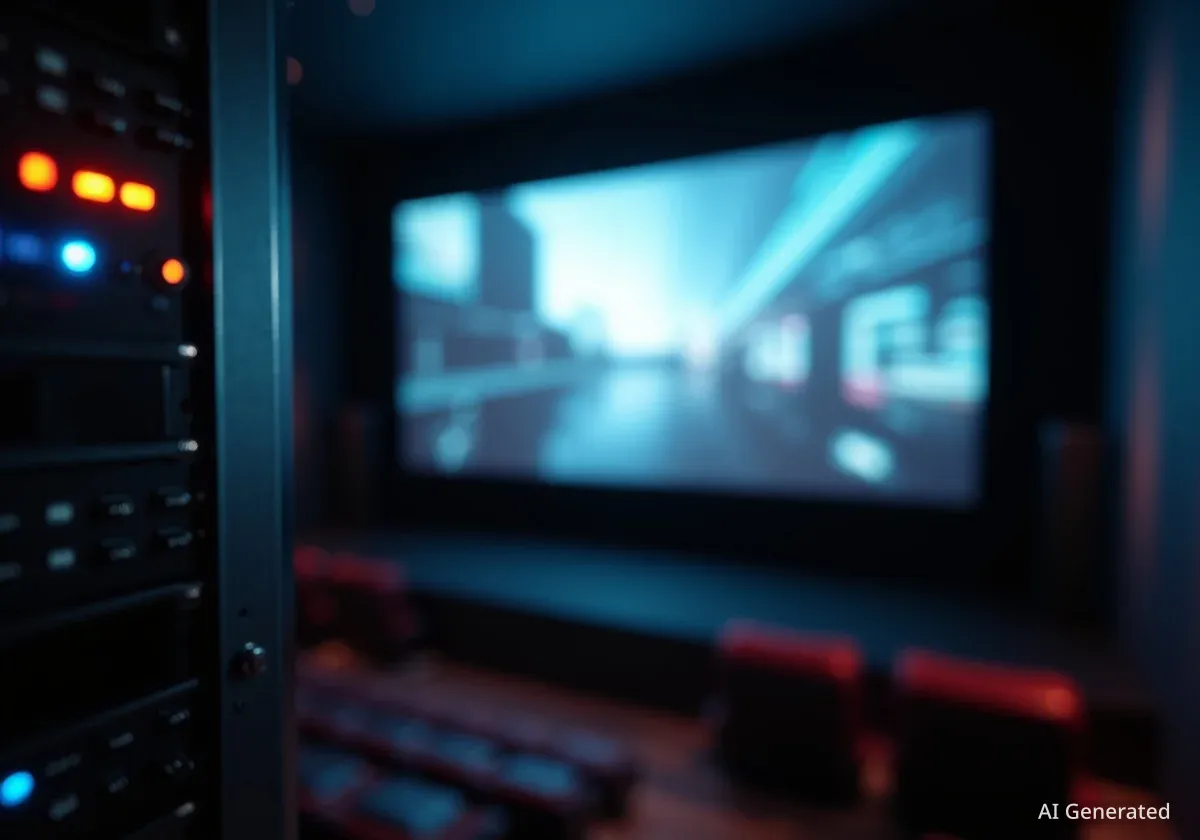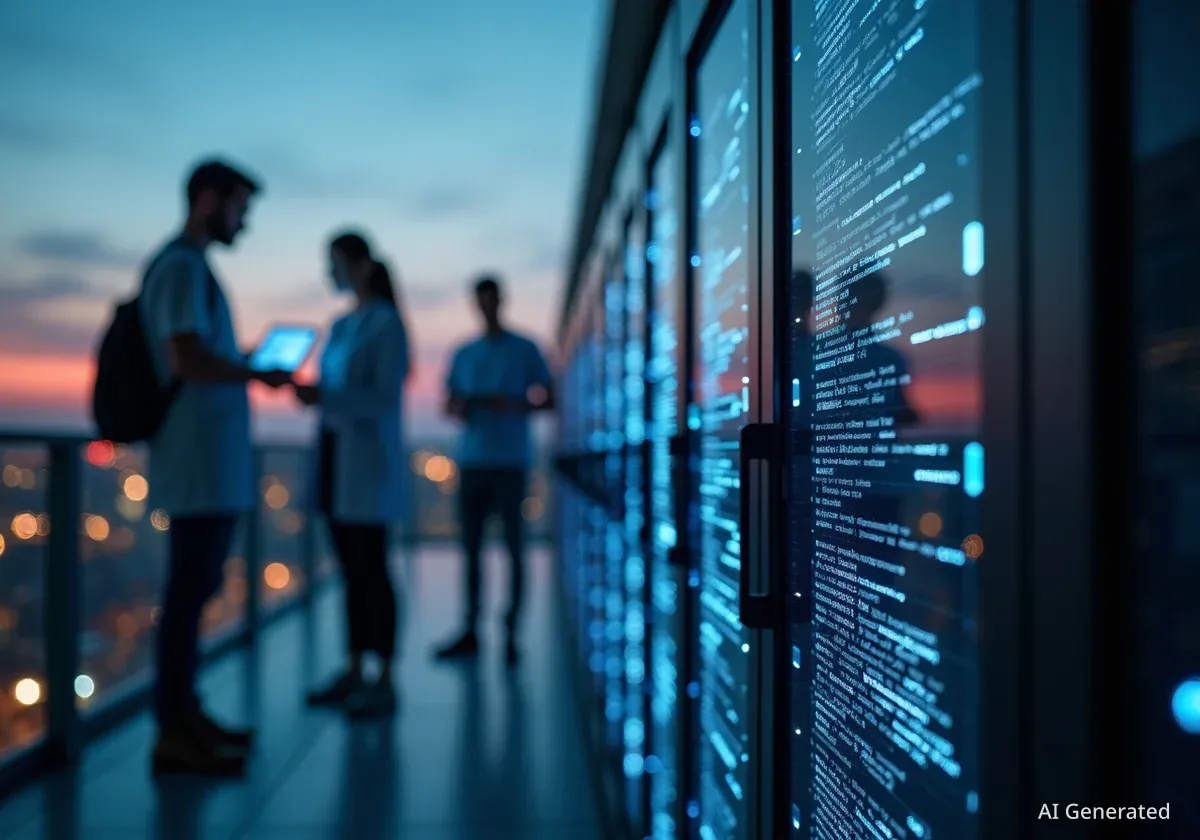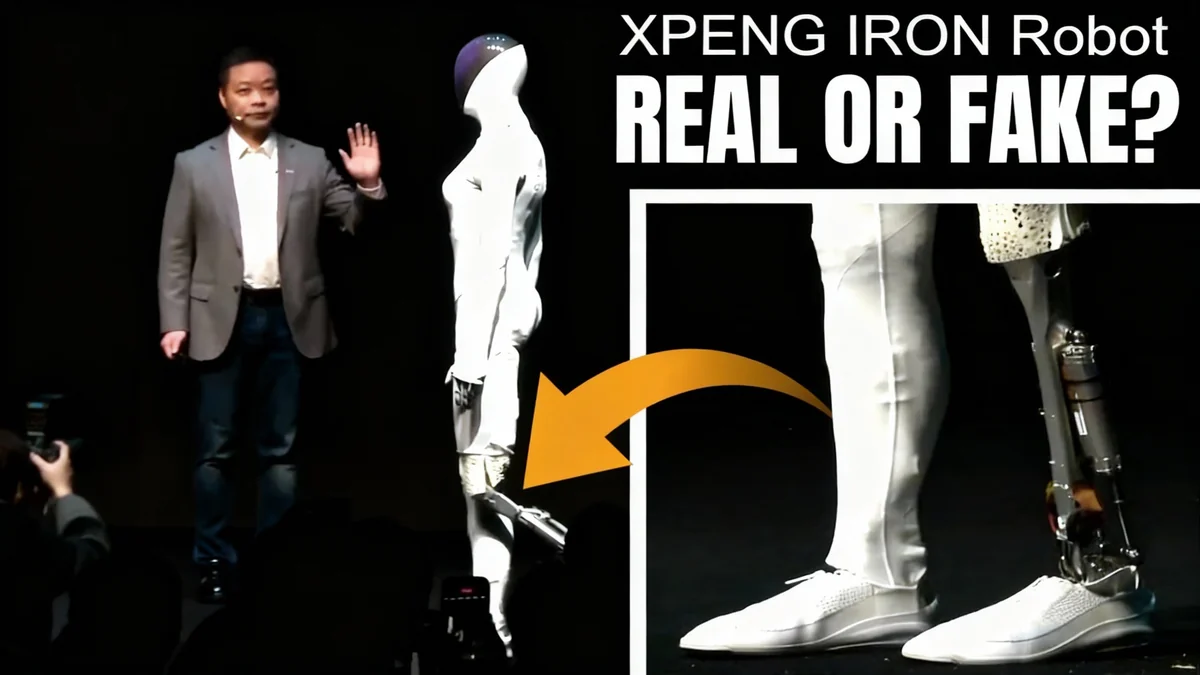Artificial intelligence startups are actively seeking to integrate their generative video technologies into Hollywood's production pipelines. Despite rapid advancements, the technology currently faces significant limitations in quality and consistency, creating a complex landscape of opportunity and concern for the film industry.
Major entertainment studios have begun exploring partnerships with AI firms, while creative professionals and unions raise critical questions about copyright infringement, job displacement, and the future of artistic creation. This push comes as the debate intensifies over whether AI will serve as a tool for creators or a replacement for them.
Key Takeaways
- AI startups are aggressively marketing generative video tools to Hollywood studios for use in film and television production.
- Current text-to-video technology, while improving, has not yet reached a level of quality suitable for mainstream feature film production.
- The entertainment industry is divided, with some executives exploring AI's cost-saving potential while creatives voice concerns over job security and intellectual property rights.
- Proponents argue AI democratizes filmmaking, while critics warn it devalues the skilled labor of writers, artists, and technicians.
- Significant legal and ethical challenges, particularly regarding copyright and the use of training data, remain unresolved.
The Rapid Evolution of Generative AI in Media
The journey of generative AI in visual media has been remarkably swift. Only a few years ago, text-to-image models produced abstract, often distorted images that were more artistic curiosities than practical tools. Today, these systems can generate highly detailed and specific visuals from simple text prompts.
This progress laid the groundwork for the next frontier: text-to-video. Companies have invested heavily in developing models capable of creating moving images from descriptions. Prominent examples include Runway's Gen series, Meta's Make-A-Video, and Google's Veo, each demonstrating progressively more sophisticated capabilities.
These tools have moved from generating short, silent clips to producing sequences with more coherent motion and narrative potential. This rapid technological acceleration is what has captured the attention of entertainment executives, who see a potential future where AI assists in or even automates parts of the production process.
From Still Images to Moving Pictures
The technological leap from text-to-image to text-to-video is substantial. While image generation requires creating a single coherent frame, video generation demands consistency across thousands of frames. This includes maintaining character appearance, object permanence, and logical environmental physics, which remain major challenges for current AI models.
Hollywood's Cautious Approach to AI Tools
With AI technology advancing, some of Hollywood's largest studios are signaling their readiness to explore its applications. The potential for cost savings in areas like pre-visualization, special effects, and even background animation is a powerful incentive for an industry facing constant budget pressures.
However, this interest is met with significant apprehension from the creative workforce. The 2023 strikes by the Writers Guild of America (WGA) and the Screen Actors Guild (SAG-AFTRA) brought the issue of AI to the forefront. Both unions fought for and secured protections regarding the use of AI in screenwriting and the creation of digital likenesses of actors.
These labor disputes highlight the central tension in Hollywood's relationship with AI. While studios see a tool for efficiency, creators see a potential threat to their livelihoods and artistic control. The industry is now in a period of cautious experimentation, trying to find a balance between innovation and protecting its human talent.
AI in Production is Not New
Artificial intelligence has been used in film production for years, but in more limited, specific ways. AI-powered tools are common in post-production for tasks like color grading, audio cleanup, and rotoscoping (isolating objects in a frame). The current shift involves generative AI, which creates new content rather than just refining existing material.
The 'Democratization' Debate
A primary argument from proponents of generative AI is its potential to democratize the creative process. They contend that these tools lower traditional barriers to entry, such as the need for expensive equipment, large crews, or years of specialized training in skills like animation or cinematography.
According to this view, anyone with a compelling idea could theoretically generate a short film or visual sequence, opening up storytelling to a wider range of voices. This perspective positions AI as an empowering tool that puts creative power directly into the hands of individuals.
"Many supporters of generative AI see it as a tool that levels the playing field, removing technical obstacles that have historically limited who can create high-quality visual content."
However, this argument faces strong criticism. Opponents argue that describing skills like drawing, writing, or composing music as mere "barriers" devalues the craft and expertise developed through years of practice. They suggest that relying on AI could lead to a homogenization of styles and a loss of the unique human perspective that defines great art.
Furthermore, critics point out that the true beneficiaries of this technology may not be individual artists but large corporations that can use AI to reduce their reliance on skilled, unionized labor, ultimately consolidating power rather than distributing it.
Assessing the Quality of Current AI Video
Despite the excitement from AI companies, the output from current text-to-video models is not yet ready for a leading role in major motion pictures. While impressive in short bursts, the technology struggles with several key issues that are fundamental to filmmaking.
Key Technical Hurdles
- Consistency: Maintaining the consistent appearance of a character, their clothing, or a specific prop across different scenes and camera angles is a major challenge.
- Physics and Motion: AI-generated videos often feature unnatural movement or a poor understanding of physics, resulting in objects or characters behaving in strange ways.
- Narrative Coherence: While AI can generate a sequence of shots, ensuring those shots connect logically to tell a coherent story remains a difficult task that requires human direction.
- The "Uncanny Valley": Many AI-generated humans and creatures still fall into the "uncanny valley," where they are realistic enough to look familiar but different enough to be unsettling to viewers.
Because of these limitations, much of the AI-generated video content seen publicly, such as the short film Critterz, is often described as experimental. It showcases the potential of the technology but also clearly reveals its current shortcomings. For now, its most practical application in Hollywood seems to be in supplementary roles rather than as a primary production tool.
Navigating Copyright and Labor Concerns
Beyond the technical limitations, two of the most significant obstacles to AI's integration in Hollywood are legal and ethical. The issue of copyright infringement is at the center of numerous high-profile lawsuits.
Generative AI models are trained on vast datasets of existing images and videos, much of which is copyrighted material scraped from the internet without permission. Artists, photographers, and film studios argue that this constitutes copyright infringement on a massive scale. The legal outcomes of these cases will have a profound impact on the future development and use of AI technology.
Global AI Regulation
Governments worldwide are beginning to address the legal gray areas of AI. The European Union's AI Act, for example, includes provisions requiring developers of generative AI models to disclose the copyrighted material used in their training data, a move that could set a global precedent.
The second major concern is job displacement. Creative professionals across the industry, from concept artists and animators to writers and editors, fear that studios will use AI to cut costs by reducing headcounts. While proponents claim AI will be a "co-pilot" that assists rather than replaces, the history of technological adoption in other industries suggests that workforce reduction is a common outcome.
As Hollywood continues to engage with AI, it must navigate this complex intersection of technological promise, artistic integrity, legal precedent, and the livelihoods of the hundreds of thousands of people who form the backbone of the entertainment industry.





